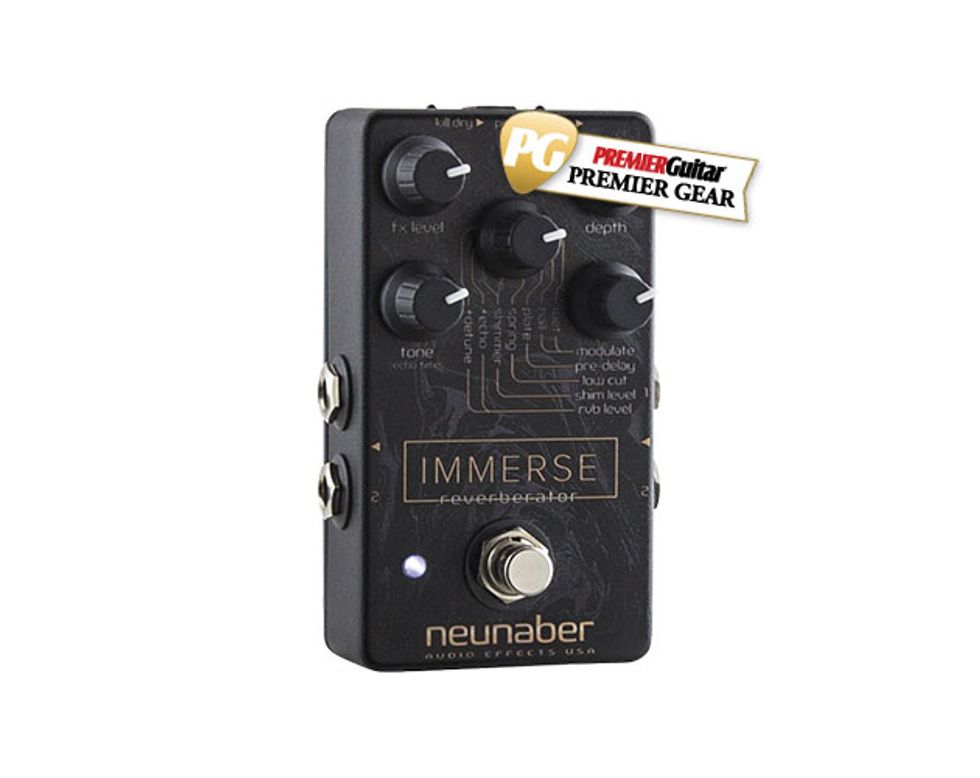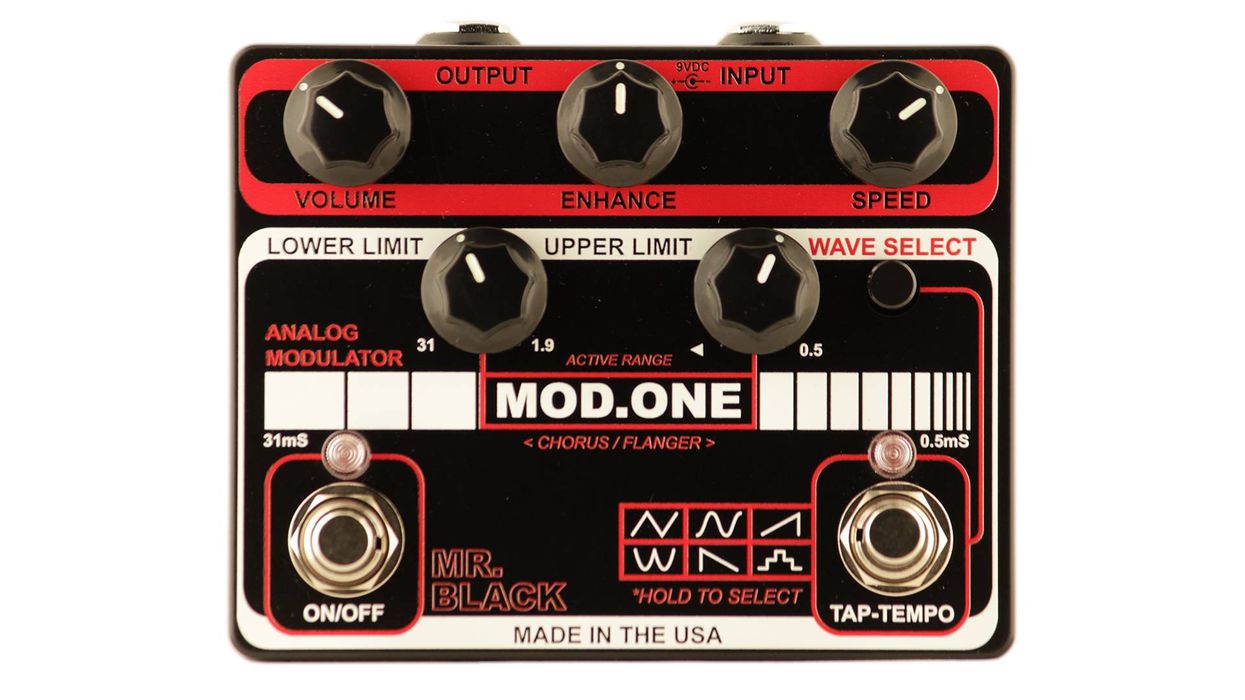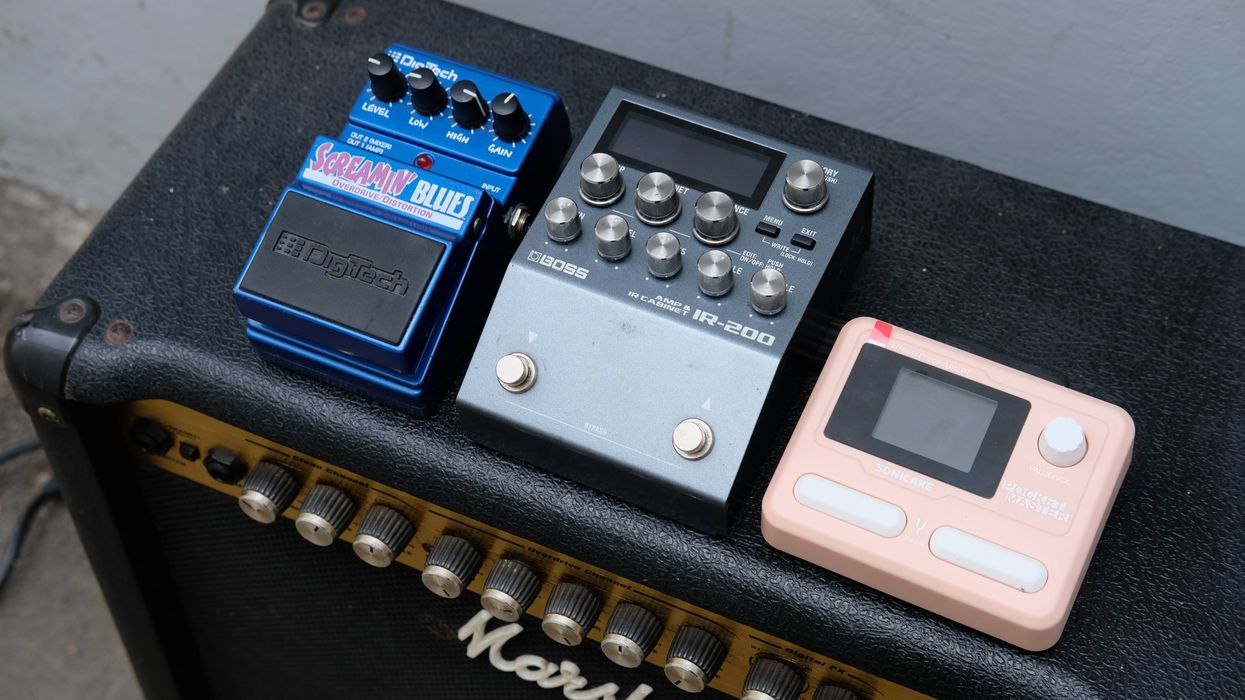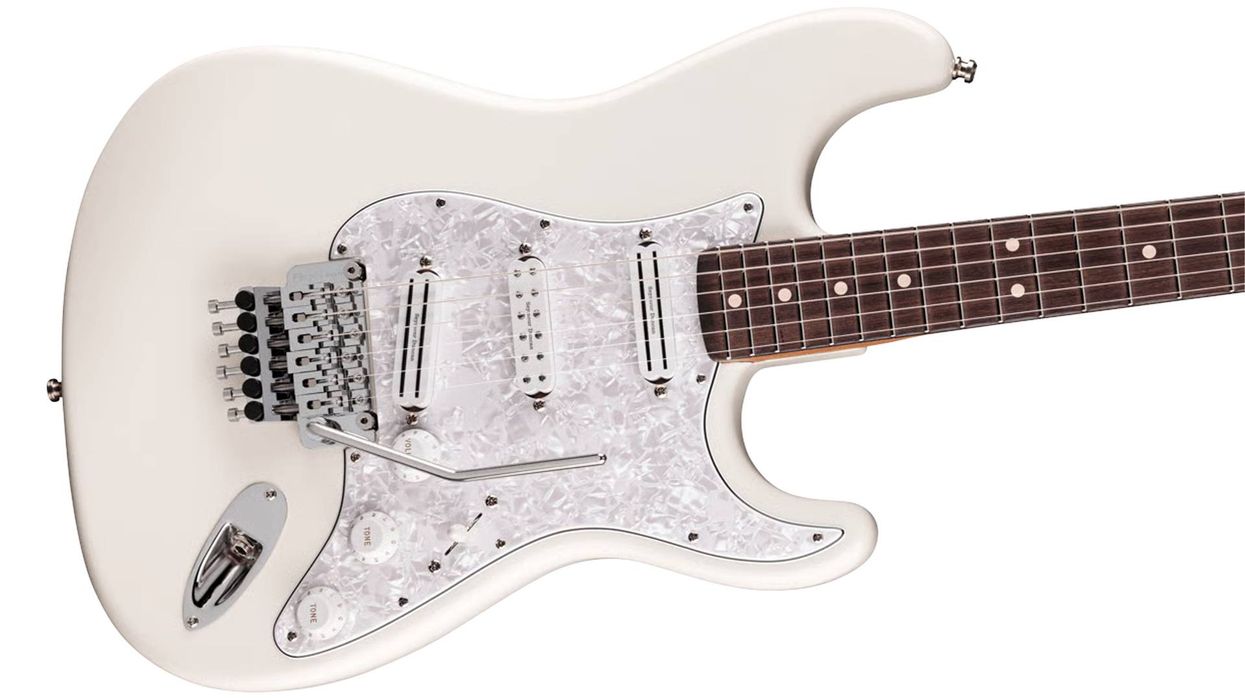All clips recorded direct through a Focusrite Scarlett 2i4 and using a Fender Telecaster and Fender Deluxe Reverb
Clip 1 - Release at 7 o’clock, ratio at 3 o’clock, threshold at 11 o’clock.
Clip 2 - Release at 8 o’clock, ratio at 12 o’clock, threshold at 12 o’clock.
Clip 3 - Release at 7 o’clock, ratio at 3 o’clock, threshold at 11 o’clock.
Over the last few years, pedal makers have toyed pretty ingeniously with the sound of space—making reverb ever more musical, organic, and at times, unreal. Neunaber's Immerse does each of these things. And though it probably has more reverb-shaping twists and turns than the average player needs, reverb addicts will rejoice over the amount of sounds this stomp can produce.
Neunaber not only improved on the secret sauce that made the Wet reverb sound so good, but added seven new reverb flavors into the mix—along with smart design elements that keep the learning curve shallow.
Rockabilly Ruckus
Covered in text and graphics that highlight the relationships between functions, Immerse looks busy. The functionality is easy to grasp, however. The center knob switches between modes: wet, hall, plate, spring, shimmer a, shimmer b, +echo, and +detune. Depending on the mode the knob in the lower right adjusts modulation, pre-delay, shimmer, and reverb level. The remaining controls handle depth, level, and tone (which becomes a delay time control in echo mode). There are many more sounds in the Immerse than can be covered in this review. Discovering the deeper capabilities is half the fun, though. Working from unexpected settings and tailoring those sounds to your needs is a rewarding process.
Ratings
Pros:
All the reverb tones you likely would ever need. Wonderfully useful echo controls.
Cons:
No presets or expression control.
Tones:
Ease of Use:
Build:
Value:
Street:
$225

Neunaber Audio Effects Immerse Reverberator
neunaber.net
The mixture of a warm, enveloping reverb mixed with a dose of delay is a classic formula that everyone from The Edge to Albert Lee has used and abused. It’s also a specialty of the Immerse in +echo mode. This mode combines the wet reverb algorithm with delays between 50ms and 720ms in length. Like a lot of old-school echo boxes, you need to dial in the tempo of the repeats by ear (there is no tap tempo functionality). The breadth of sounds in this setting alone made me yearn for some sort of preset function. Most of the sounds—particularly the basic echo settings—are satisfying to work with. With the delay time at 9 o'clock, the depth at 1 o'clock, and the level at 2 o'clock I got a convincing, organic-sounding rockabilly slapback tone. It lacked some of the imperfect charm that analog lovers treasure, but considering the wealth of options in the other modes, a barely perceptible digital edge seems like a fair trade.
Rolling in the Deep
I love a good spring reverb, so I plugged my Telecaster into my Fender Deluxe and dialed up just a hint of effect in the spring setting. The first thing I noticed is how even the sweep of the level control is. I've encountered a lot of Fender reverb-emulating effects that go too deep too quickly. With the Immerse, I was able to be very subtle and very specific about how much reverb I dialed in. The low cut control helped me refine the tone further by weeding out muddiness in the effected signal.
Some of the nicest sounds come via the shimmer options. Both shimmer A and shimmer B create softly attenuated synth-style backings that dance around your fundamental tones. These church-like settings sit alongside your original signal like a soloist in a Tabernacle choir who is never out of tune, so I set up a looper, laid down some synth-style pads, and let my inner Bill Frisell weave introspective, melodic riffs over the top.
The +detune mode is fun too. You have to crank the level significantly to bring the effect to the fore. But once you do, the almost queasy, pitch-shifting effect becomes a cool melodic tool. The only bummer is that you cannot control the intensity of the pitch shift.
The Verdict
Immerse is an impressive reverb tool. Lush, beautiful reverb tones lurk around every corner and with the smartly designed interface, there are many more options than the five-knob setup would lead you to believe. Better still, Immerse can move from purely practical to indulgent with ease—providing the basic spring tones I need for everyday use with more experimental settings I can use in my home studio. Even if you don't lust over classic surf tones, ambient shoegaze waves, or ethereal sonic settings, the Immerse is a strong ally if you like control over the space in your sound.



























